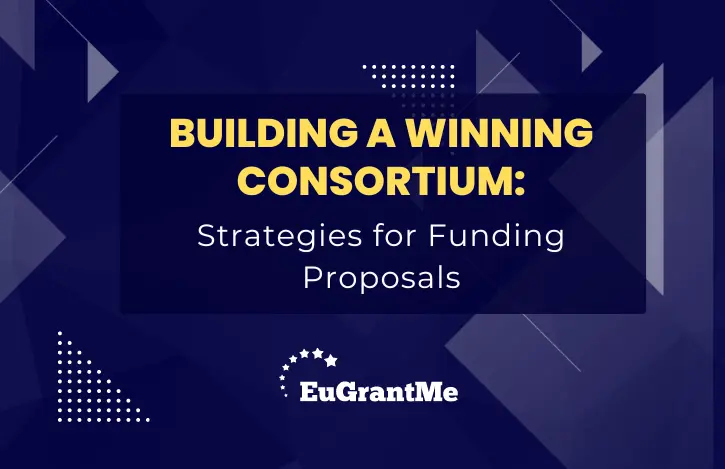In the competitive landscape of funding proposals, the strength of your consortium can often determine the success or failure of your project. Assembling the right team with complementary expertise and capabilities is essential for crafting a compelling proposal that stands out to funding agencies. In this article, we will explore proven strategies and best practices for building a winning consortium that maximises your chances of securing funding for your projects.
-
Understanding the Funding Landscape
Before diving into the process of forming your consortium, it’s crucial to gain a comprehensive understanding of the funding landscape. Research funding opportunities aligned with your project goals and objectives, including eligibility criteria, funding priorities, and evaluation criteria. By familiarising yourself with the funding agency’s requirements and preferences, you can tailor your consortium formation strategy to align with their expectations.
-
Identifying Key Partners and Stakeholders
Once you have a clear understanding of the funding landscape, the next step is to identify potential partners and stakeholders for your consortium. Look for organisations and individuals with expertise, resources, and networks that complement your project objectives. Consider reaching out to academic institutions, research organisations, industry partners, and non-profit organisations that share an interest in your project’s focus area. Engage stakeholders early in the process to ensure alignment of goals and expectations and foster collaboration throughout the proposal development process.
-
Leveraging Collaborative Networks and Platforms
In today’s interconnected world, collaborative networks and platforms offer valuable resources for building consortia and connecting with potential partners. Explore online platforms, such as research collaboration databases, funding agency portals, and professional networking sites, to identify and engage with potential collaborators. Participate in relevant workshops, conferences, and networking events to expand your professional network and build relationships with potential partners. By leveraging collaborative networks and platforms, you can access a broader pool of expertise and resources to strengthen your consortium.
-
Developing a Clear Value Proposition
A compelling value proposition is essential for attracting partners to your consortium. Clearly articulate the benefits of collaboration, highlighting how each partner’s expertise and resources contribute to the project’s success. Emphasise the unique value proposition of your consortium, such as access to specialised facilities, unique datasets, or complementary skills. Demonstrate the potential impact of your project and the value it brings to stakeholders, funders, and society at large. A well-defined value proposition not only attracts partners but also enhances the competitiveness of your funding proposal.
-
Establishing Clear Roles and Responsibilities
Effective collaboration requires clear communication and defined roles and responsibilities among consortium members. Establish governance structures, decision-making processes, and communication protocols to ensure accountability and transparency within the consortium. Clearly define the roles and responsibilities of each partner, including project management, research activities, budget management, and reporting requirements. Foster a collaborative and inclusive culture that values diverse perspectives and encourages active participation from all consortium members.
-
Building Trust and Relationships
Trust and relationships are the foundation of successful consortia. Invest time and effort in building trust among consortium members through open communication, mutual respect, and shared goals. Foster a collaborative environment where ideas are freely exchanged, feedback is welcomed, and conflicts are resolved constructively. Cultivate long-term relationships with consortium members beyond the scope of the project, laying the groundwork for future collaborations and partnerships.
-
Adapting to Changing Dynamics
The funding landscape is dynamic, with priorities, regulations, and funding opportunities constantly evolving. Stay agile and adaptable, prepared to adjust your consortium strategy in response to changes in the external environment. Monitor funding agency announcements, policy developments, and emerging trends in your field to identify new opportunities and challenges. Be proactive in adapting your consortium composition, project scope, and strategy to maximise your chances of success in securing funding.
Conclusion
Building a winning consortium is a critical step in the funding proposal process, requiring careful planning, strategic thinking, and effective collaboration. By understanding the funding landscape, identifying key partners, leveraging collaborative networks, developing a clear value proposition, establishing clear roles and responsibilities, building trust and relationships, and adapting to changing dynamics, you can position your consortium for success. Invest time and effort in building a strong and cohesive consortium, and increase your chances of securing funding for your projects.
At EuGrantMe, we are passionate about fostering innovation and empowering ambitious minds to flourish. Our mission revolves around providing top-notch grant writing services for the EIC Accelerator and Horizon grants in Europe, enabling our customers to unlock the full potential of their ground-breaking ideas.
Do you have a project to turn into reality?
Contact us!


